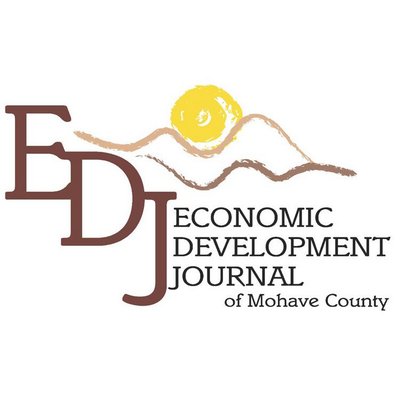The updated wage rate is part of a series of increases stemming from Proposition 206, the Fair Wages and Healthy Families Act, which Arizona voters passed in 2016. This legislation not only raised the minimum wage but also introduced annual adjustments based on inflation. The latest increase reflects a 3.6% rise from the 2023 minimum wage, a response to the 3.7% inflation rate recorded from August 2022 to August 2023.
While Arizona’s move aligns with a national trend towards higher minimum wages, with 22 states announcing increases in 2024, its impact on local businesses varies. Some sectors, such as family employment and casual babysitting, or businesses with annual revenues under $500,000, remain exempt from these new wage standards. However, for the vast majority of businesses, especially small enterprises, the increase poses significant challenges.
The primary concern for these businesses is the rise in labor costs. Higher wages directly affect payroll expenses, leading to a potential reshuffle of the workforce and salary structures within companies. For small business owners, this increase can squeeze profit margins, as they may find it harder to pass these costs onto consumers compared to larger corporations. The situation is particularly acute for those operating on thin margins, where any increase in operating costs can have a pronounced effect.
Moreover, this wage hike occurs in a broader economic context marked by high inflation and a tight labor market. Many Arizona businesses had already begun offering wages above the minimum to attract and retain employees. This environment, where competitive salaries are becoming the norm, raises questions about the long-term implications of the minimum wage increase on both employment patterns and the overall economy in Arizona.
In response to these challenges, Arizona businesses are exploring various strategies. Some are considering reducing their workforce or combining employee roles to manage higher wage costs. Others are turning towards automation, particularly in sectors with low-skill, labor-intensive jobs. This trend towards automation, exemplified by the growing use of self-checkout lanes in grocery stores and digital kiosks in fast-food restaurants, reflects a broader shift in the business landscape as companies seek to balance rising labor costs with operational efficiency.
Beyond workforce adjustments, businesses are also reevaluating their overall financial strategies. This includes streamlining expenses, such as reducing payroll costs and negotiating with suppliers for cost reductions. Companies are also looking into state assistance programs, like the Arizona Department of Economic Security’s Shared Work program, which supports employers and employees facing job reductions. Addressing long-neglected expenses and deferred maintenance, and renegotiating existing financial obligations, are also key components of these revised strategies.
On the revenue side, businesses are exploring asset liquidation to reduce debt and adapting their pricing strategies to reflect the changing market conditions. Diversifying product or service offerings is another approach being considered, enabling businesses to tap into new revenue streams. Such strategies are vital for small businesses to maintain competitiveness and profitability in a market where costs are rising.
The minimum wage increase also has broader implications for Arizona’s economy. While it boosts the income of low-wage workers, potentially increasing consumer spending, the impact on small businesses could lead to a contraction in job opportunities. This situation is exacerbated by the high inflation rate, which adds to the cost pressures faced by businesses. The balancing act between maintaining employee livelihoods and ensuring business sustainability is a critical challenge for Arizona’s economic outlook in 2024.
The wider economic impact of these changes is significant. Nationally, the push for higher minimum wages is gaining momentum, with proposals to increase the federal minimum wage to $17 by 2028 under consideration. Such increases are expected to benefit millions of workers across the country, enhancing their purchasing power. However, the debate continues on how these changes will reshape the business environment, particularly for small and medium-sized enterprises that form the backbone of local economies.
For the employees, the increase in minimum wage brings a much-needed boost in income, particularly amidst rising costs of living. This uplift in wages is poised to enhance their quality of life, allowing for better financial stability. It’s expected that with more disposable income, workers will contribute to the local economy through increased consumer spending. This could potentially offset some of the economic pressures businesses face by creating a more robust customer base.
However, the benefits for workers are contrasted with concerns from employers, particularly small business owners. The higher wage bill may lead to tougher hiring decisions, with some businesses potentially reducing their workforce or curbing plans for expansion. This scenario could tighten job opportunities in the state, posing a challenge for those entering the workforce or seeking new employment opportunities.
The tension between the positive effects of wage increases for workers and the challenges for businesses highlights the complex dynamics of wage policies. While higher wages can lead to improved living standards for workers, they can also introduce stressors into the business environment, particularly for smaller entities with less financial flexibility.
Looking ahead, the impact of the minimum wage increase in Arizona will likely be monitored closely by policymakers, businesses, and workers alike. This will help in understanding the broader economic implications and in guiding future decisions regarding wage policy in the state.
Given these varying impacts, it’s crucial for all stakeholders – government, businesses, and workers – to engage in ongoing dialogue. This collaboration is essential to ensure that the benefits of the wage increase are maximized while mitigating potential negative outcomes. Effective policy-making, coupled with adaptive business strategies and informed workforce participation, will be key to navigating these changes successfully.
Arizona’s minimum wage increase in 2024 presents a multifaceted economic scenario. For workers, it’s a welcome relief against inflation, potentially enhancing spending and driving economic activity. Businesses, especially small ones, face a challenging adjustment period, balancing increased labor costs with profitability. This necessitates innovative strategies in expense management, revenue generation, and workforce planning.
The broader economic implications will unfold over time, influencing policy decisions and business practices. Continued collaboration and adaptive strategies among stakeholders are essential for a sustainable economic environment in Arizona. Monitoring these developments will provide valuable insights for future policymaking and economic planning in the state.
–Jeremy Webb





























